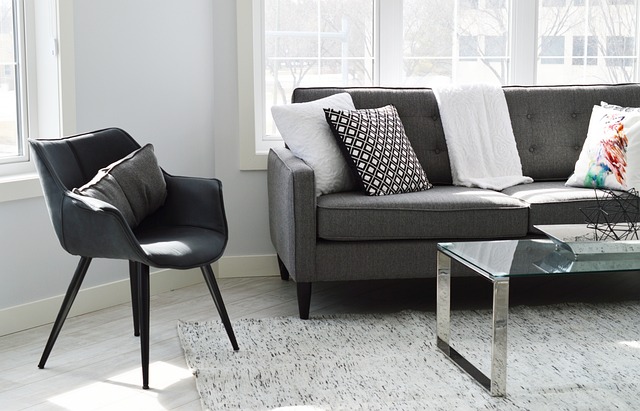Creating the Perfect Living Room: A Guide to Furniture, Decor, and Ambiance
The living room is often considered the heart of a home, serving as a central gathering space for family and friends. It's where we relax, entertain, and create lasting memories. Designing a comfortable and inviting living room requires careful consideration of various elements, including furniture, decor, lighting, and textiles. This comprehensive guide will explore how to create a perfect living room that reflects your personal style and meets your functional needs.

A coffee table is another essential piece, serving as both a functional surface and a design element. Consider ottomans or poufs for extra seating and a touch of versatility. Don’t forget storage solutions like bookcases or media consoles to keep your living room organized and clutter-free.
How can decor enhance the aesthetics of your living room?
Decor plays a crucial role in personalizing your living room and creating a cohesive look. Start with a focal point, such as a fireplace, large window, or statement art piece. Build your decor around this central element to create a sense of harmony.
Incorporate a mix of textures and materials to add depth and interest to the space. Use decorative items like vases, sculptures, or plants to bring life to shelves and surfaces. Wall art, mirrors, and photo galleries can add personality and make the room feel more inviting.
Remember to maintain a balance between open space and decorative elements to avoid a cluttered appearance. The goal is to create a visually appealing environment that reflects your personal style while maintaining a comfortable and functional living space.
What lighting options can create the right ambiance in a living room?
Lighting is a crucial element in creating the right atmosphere in your living room. A well-designed lighting plan should include a mix of ambient, task, and accent lighting. Start with a central overhead light fixture, such as a chandelier or pendant, to provide general illumination.
Incorporate table lamps or floor lamps to create warm, inviting pools of light and provide task lighting for reading or other activities. Consider wall sconces or picture lights to highlight artwork or architectural features. Dimmer switches are an excellent addition, allowing you to adjust the lighting levels to suit different moods and times of day.
Natural light is also important, so make the most of windows by using sheer curtains or blinds that can be easily adjusted to control light and privacy.
How can textiles add comfort and style to your living room?
Textiles are an excellent way to add warmth, texture, and color to your living room. Start with a rug to anchor the space and define seating areas. Choose a size that allows all furniture legs to sit on the rug or at least the front legs of larger pieces.
Window treatments, such as curtains or drapes, can add softness and control light levels. Select fabrics that complement your overall color scheme and style. Throw pillows and blankets are perfect for adding pops of color and texture while also increasing comfort. Mix and match patterns and textures to create visual interest, but maintain a cohesive color palette to tie everything together.
Upholstery fabrics on sofas and chairs also play a significant role in the overall look and feel of your living room. Consider durability, ease of cleaning, and comfort when selecting these materials.
What are some tips for arranging furniture in a living room?
Proper furniture arrangement is crucial for creating a functional and inviting living room. Start by determining the room’s focal point and arrange seating to face or complement this feature. Create conversation areas by positioning seating pieces to face each other, typically no more than 8 feet apart for comfortable interaction.
Ensure there’s enough space for traffic flow, generally allowing at least 30-36 inches for main pathways. Float furniture away from walls to create a more intimate setting and make the room feel larger. Use area rugs to define and anchor seating areas, especially in open-concept spaces.
Consider the scale of your furniture in relation to the room size. Oversized pieces can overwhelm a small space, while too-small furniture can make a large room feel empty. Balance is key – mix larger pieces with smaller accents to create visual interest and maintain proportion.
In conclusion, creating the perfect living room involves thoughtful consideration of furniture, decor, lighting, and textiles. By carefully selecting and arranging these elements, you can design a space that is both beautiful and functional, reflecting your personal style while providing a comfortable environment for relaxation and entertainment. Remember that your living room should evolve with your needs and tastes, so don’t be afraid to make changes and updates over time to keep the space fresh and inviting.






